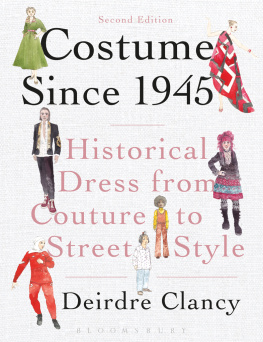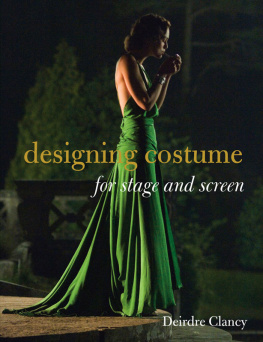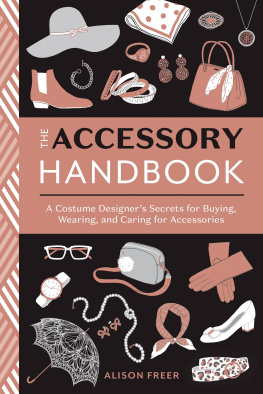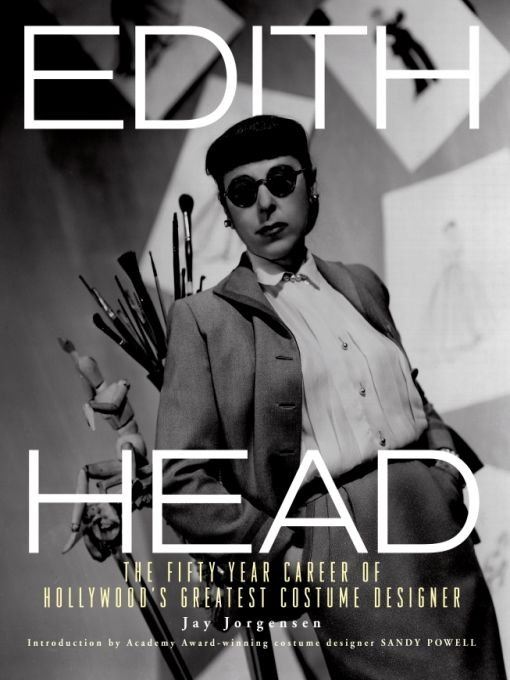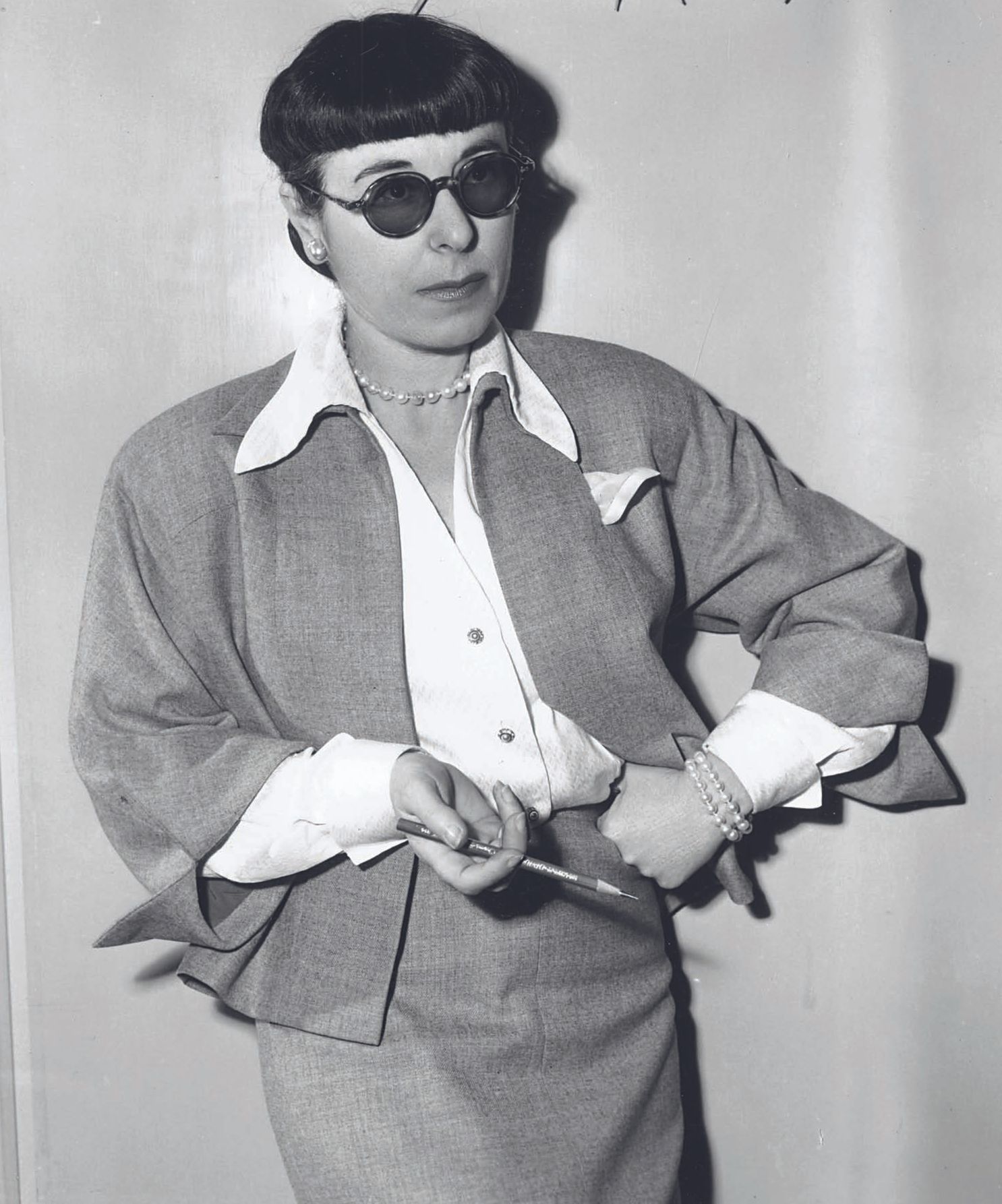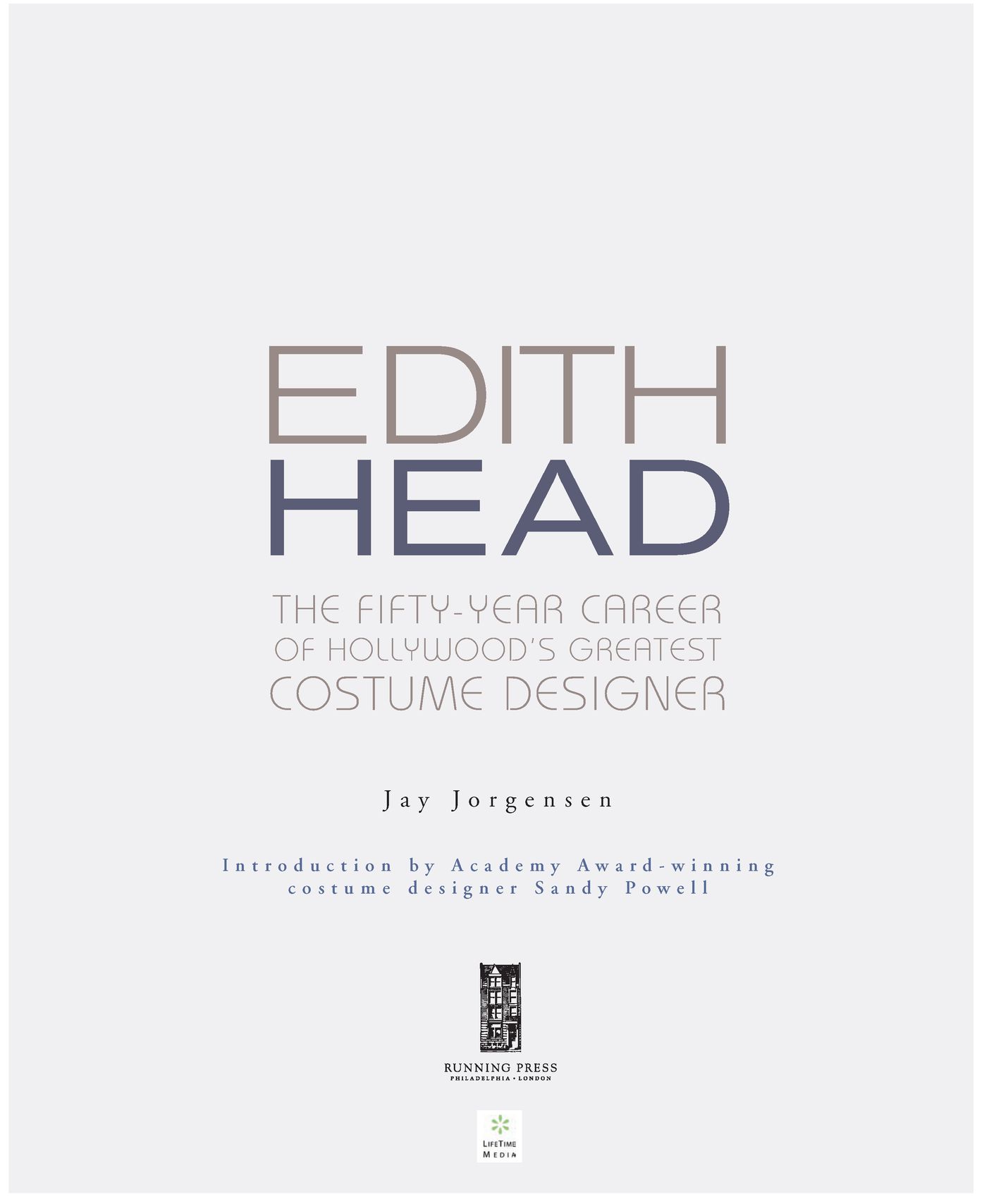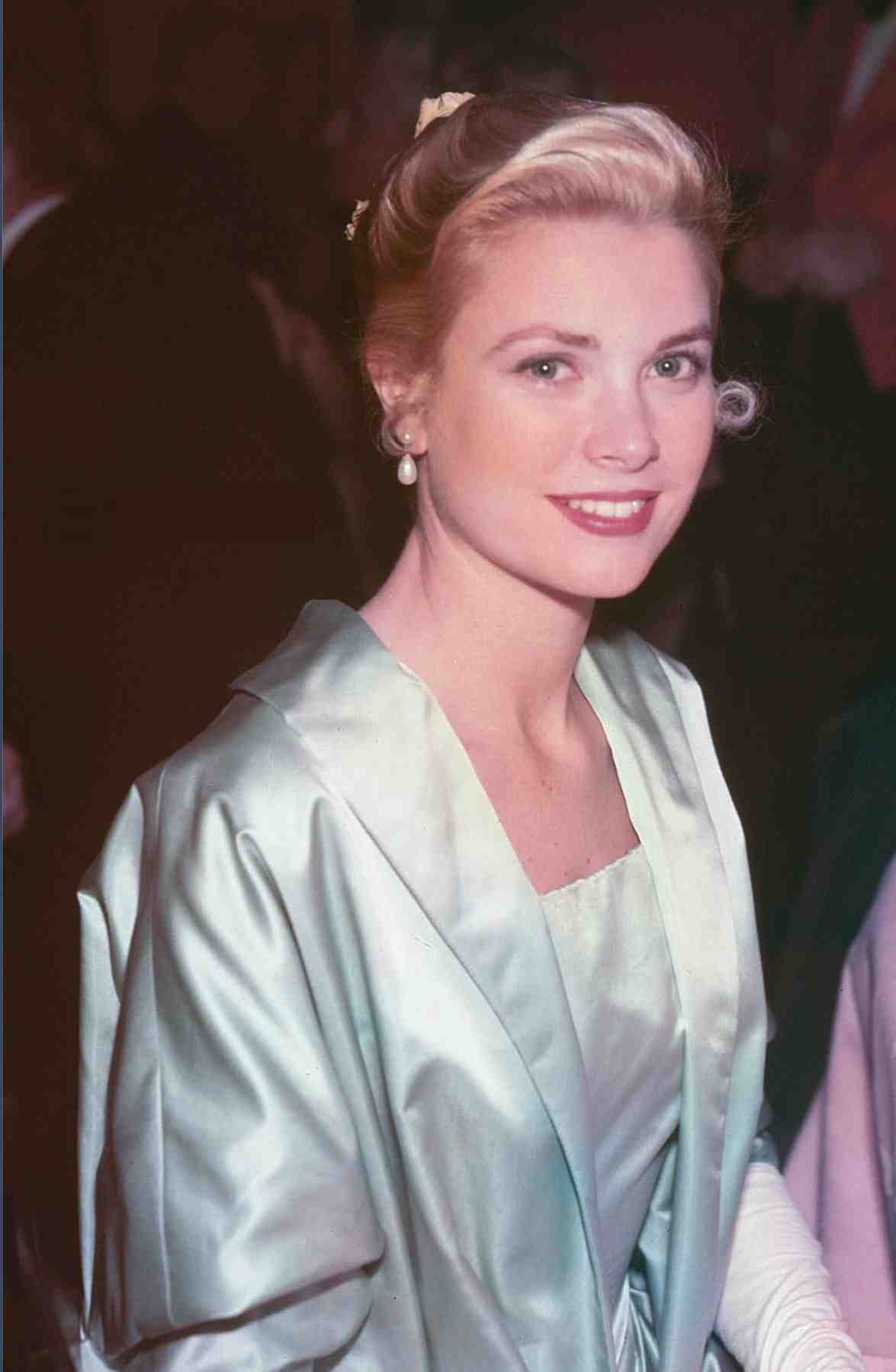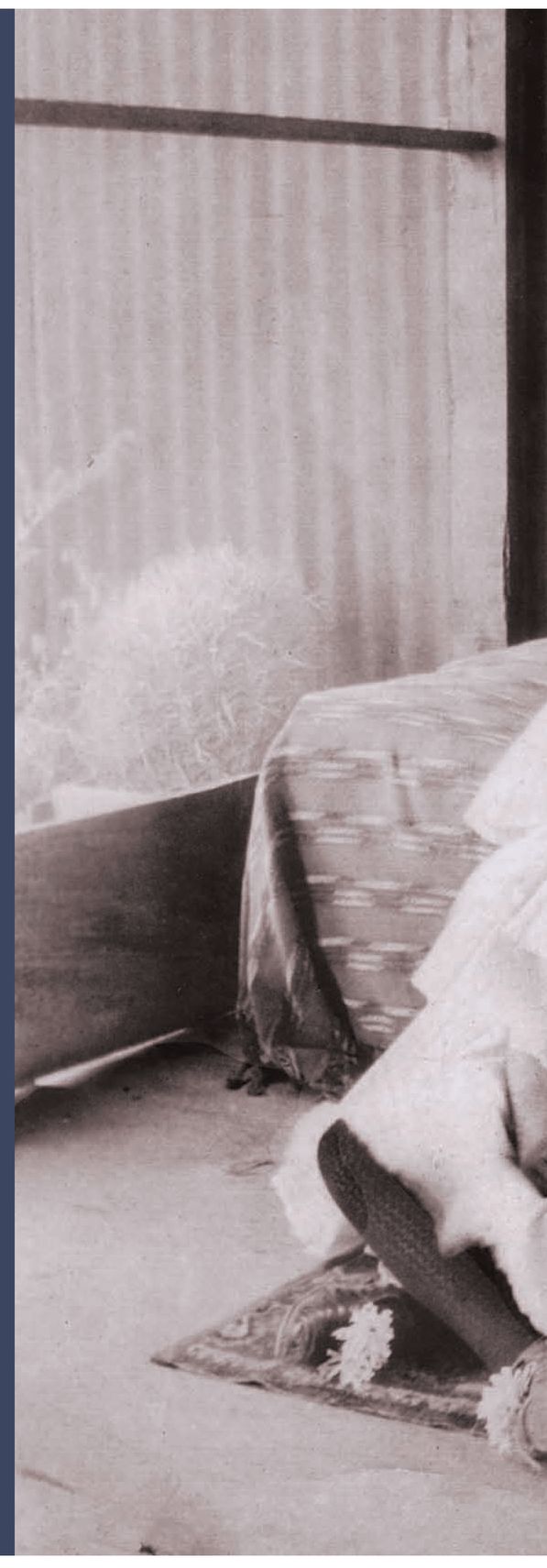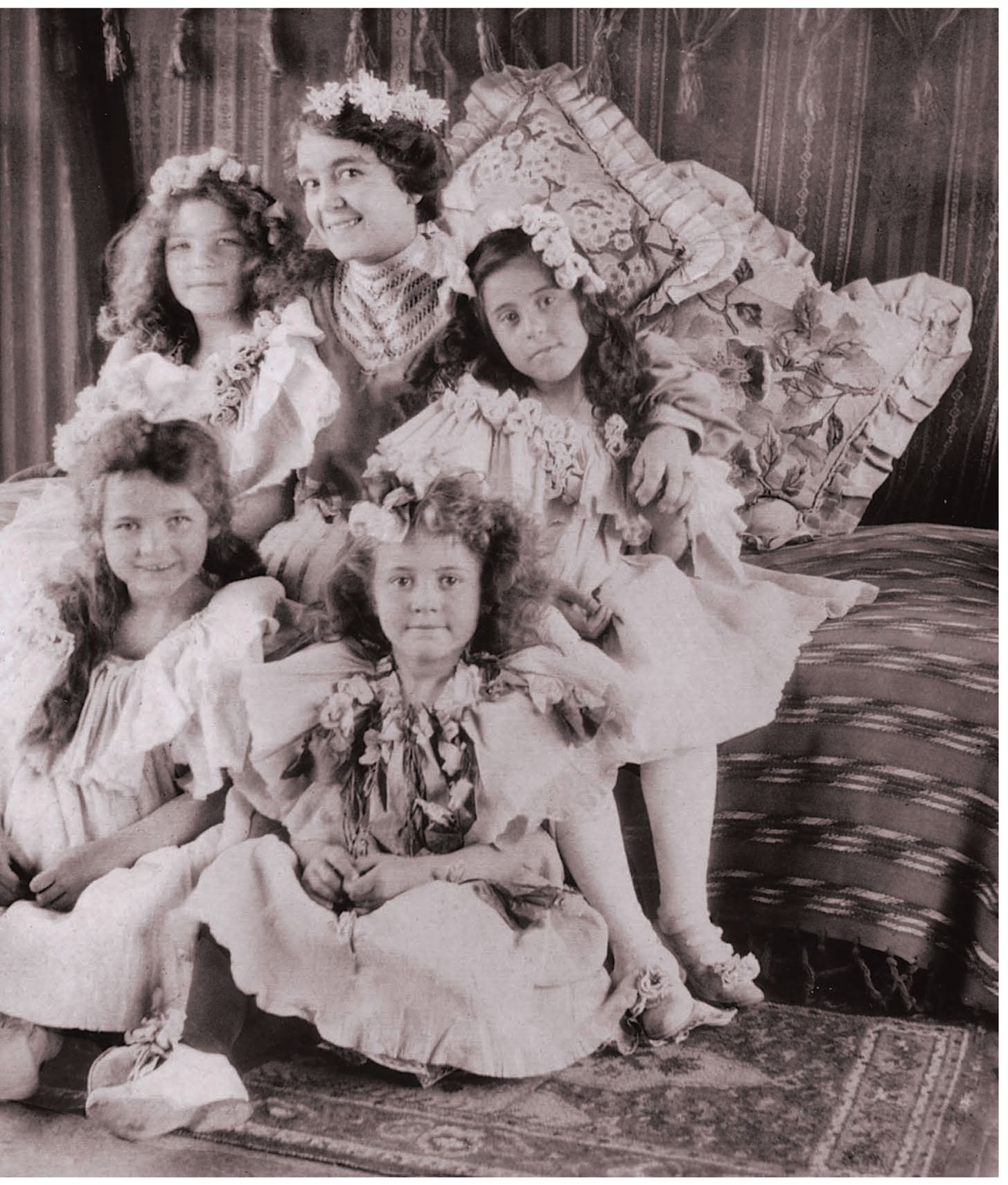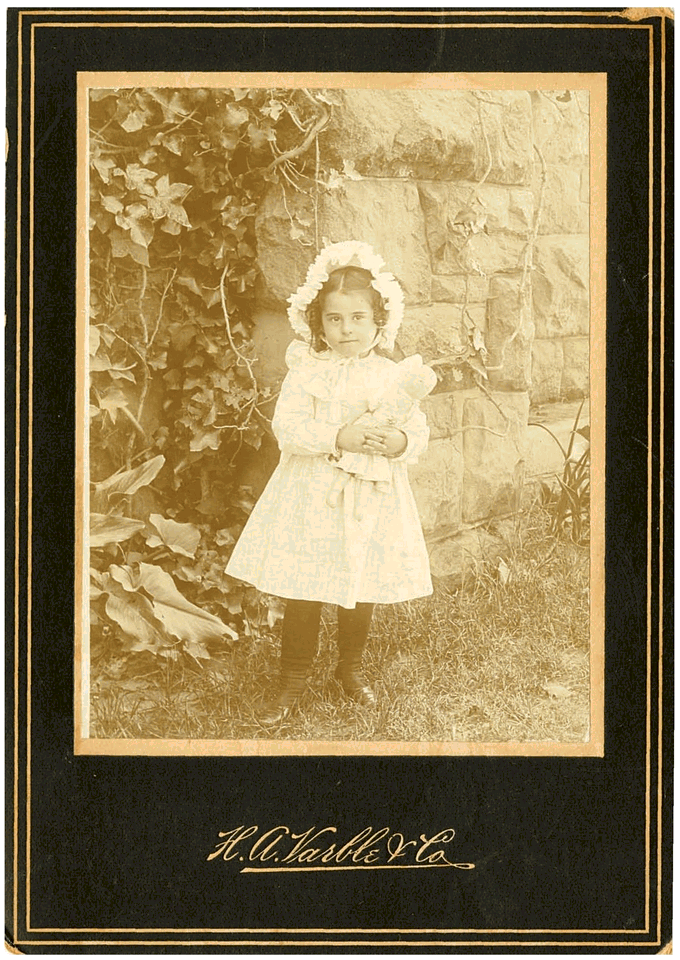Table of Contents
Grace Kelly on Oscar night 1955, in a dress and coat designed by Edith Head.
For Walter Albrecht
WHAT WE DO IS A CROSS BETWEEN MAGIC AND CAMOUFLAGE. WE ASK THE PUBLIC TO BELIEVE THAT EVERY TIME THEY SEE AN ACTRESS OR ACTOR THAT THEY ARE A DIFFERENT PERSON.
Edith Head, 1958.
INTRODUCTION by Sandy Powell
EDITH HEAD CLAIMED SHE DIDNT KNOW HOW TO SEW. THIS WASNT TRUEHER MOTHER TAUGHT HER WHEN SHE WAS YOUNG. SHE ONLY SAID SHE COULDNT SO AS TO AVOID BEING ASKED TO DO SEWING DEMONSTRATIONS ON HER MANY TELEVISION APPEARANCES, OR AT LADIES LUNCHEONS AND FASHION SHOWS. I ALSO LEARNED TO SEW AT AN EARLY AGE, AND BELIEVE IT IS ESSENTIAL FOR UNDERSTANDING THE DESIGN PROCESS.
Costume designers, like many others working in a creative field, are led to their vocation by a series of epiphanies. My first was seeing a show called Flowers, by avant garde dancer and choreographer Lindsay Kemp, in my teens. It reinforced my love of costume and theatricality. Although I look to contemporary fashion for inspiration, whether designing a modern or period film, I never wanted to be a fashion designer. To me it seemed too restricting. I was more interested in the idea of using clothes to bring characters to life in theatre or film, to make them believable as well as look good.
Under the Hollywood studio system, Edith Head was contracted to design as many films as the studio assigned to her, whether she wanted to or not. My experience of working in film has been very different. Im fortunate in that I can choose my projects based on the scripts and directors with whom Id like to work. But our careers began on a similar path. We both went to art school, and started working for little or no money.
Whenever Im asked advice on becoming a costume designer I always say that practical experience is the most valuable assetyou just have to get out there and do it. Edith did just that.
Although the life of a costume designer may appear glamorous, it isnt. There is never enough time or money. Things canand dogo wrong. Actors or directors can change their minds about a costume, sometimes moments before shooting, and a designer must quickly find an alternative. Schedules can suddenly change. A costume can get damaged. A costume designer must be resourceful and able to solve problems in an instant as any delay in shooting can cost hundreds of thousands of dollars.
Many actors have strong opinions about their character and what they should wear. There are egos and insecurities to deal with, changes of direction, and crises of confidence. About 80 percent of what a costume designer does is psychology; only 20 percent of it is art.
Nearly every costume designed for a film has a story behind its creation. While doing research for The Young Victoria, I was given access to the archives at Kensington Palace and allowed to see and touch some of Queen Victorias gowns. Martin Scorsese once gave me an entire film to watch just to see the stripe on a collar.
This book isnt so much a biography of Edith Head, the woman, but more of a biography of the clothes that she designed. Here are some of their stories.
Sandy Powell
Academy Award-winning costume designer of Shakespeare in Love, The Aviator, and The Young Victoria
Edith examines fabrics in her salon at Paramount
CHAPTER ONE
THE EARLY YEARS
Edith (far right) and a group of friends are entertained by Anna Spare (top row, center)
Edith Claire Posenor, circa 1904.
EDITH HEAD WAS ONE OF HOLLYWOODS GREATEST DESIGNERS. AN AMAZING WOMAN WHO WORKED IN A FIELD THAT WAS DOMINATED BY MEN IN THE 1930S AND 1940S, SHE DESIGNED COSTUMES FOR MORE THAN 1,100 FILMS. CONSIDERED TO HAVE HAD ONE OF THE MOST PROLIFIC AND CELEBRATED CAREERS IN THE HISTORY OF MOTION PICTURES, SHE WAS NOMINATED FOR THIRTY-FIVE ACADEMY AWARDS AND WON EIGHT OF THEM.
Head was praised for her intelligence and diplomacy by co-workers and viewed as a plagiarist and publicity seeker by some other designers. For Edith Head, the character always came first. Edith Head was driven by her passion to create a second skin for actors and actresses. Her mission was to help them effectively serve the needs of the character. Additionally, she had to meet the needs of the entire film along with the demands of the directors and studio bosses with their numerous dictates, whims, and requirements. She was a talented artist who wanted to get it right for everyone.
Screen legend Bette Davis said of the designer: Through the work of a fine costume designer, an actor or actress can become the character. We may rehearse our lines, our movements, and our expressions, but until we finally slip into the costumes does everything come together so that we actually become the character. If we are not comfortable in those clothes, if they do not project the character, the costume designer has failed us. Edith Head never failed.
Ediths childhood years were never up for discussion, even with friends. When interviewed, Edith always shared a few charming anecdotes, but never went into any detail. She would often purposely lie about her parents or mislead people about the cities in which she grew up, or even where she was born. Almost all of what is known about Ediths childhood is through the persistence of David Chierichetti, her friend and biographer, who, overtime, was able to dig deeper into some of the more painful details of Ediths childhood. Ediths father, Max Posenor, emigrated from Prussia in 1876. He was one of the millions of Jews that came to the United States in the 1800s seeking better opportunities and to escape from religious persecution and political insurrections. Ediths mother, Anna Levy, was born in St. Louis, Missouri in 1874. There is no record of Max and Anna ever being married, though Chierichetti uncovered a 1900 census report in which Max listed himself as being married for five years. The couple lived in various cities in Southern California, including San Bernardino where their daughter Edith Claire Posenor was born on October 28, 1897. Max had opened a haberdashery, but it failed shortly after Ediths birth, and the family relocated to El Paso, Texas.




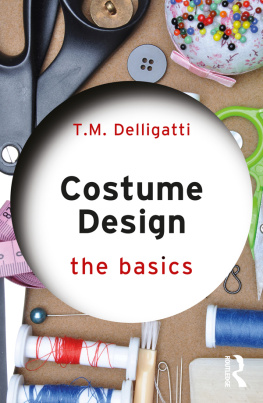



![Helen Q. Huang [黄其智] - Character Sketch: A Drawing Course for Costume Designers](/uploads/posts/book/307621/thumbs/helen-q-huang-character-sketch-a.jpg)
